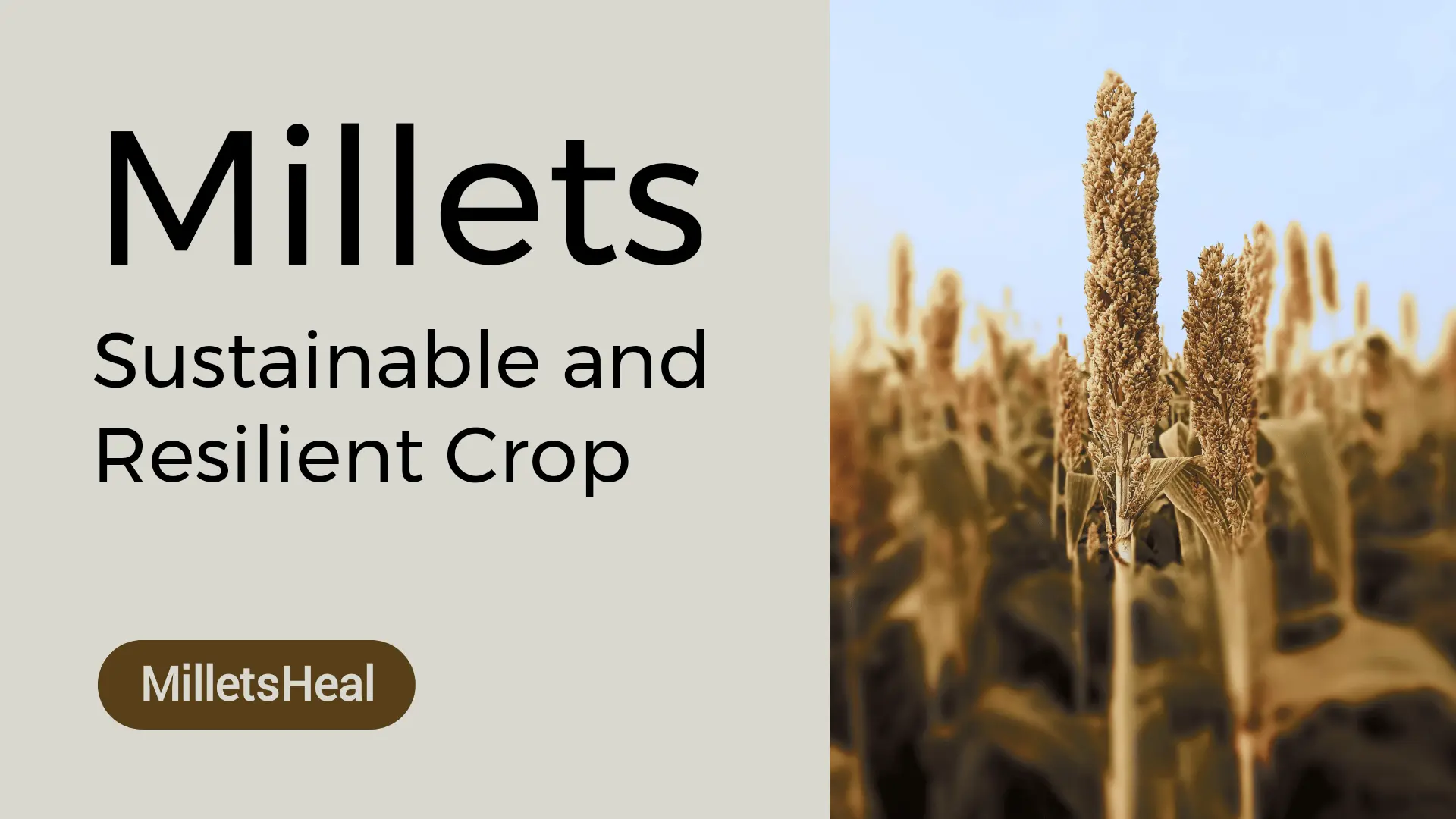In recent years, there has been a growing global concern about the sustainability of our food systems. Climate change, soil degradation, and water scarcity have become major challenges for agricultural production.
Consequently, the search for resilient and sustainable crops that can withstand these challenges has become critical. Millets, a diverse group of small-seeded grasses, are emerging as a solution to these problems.
With their impressive adaptation capabilities, nutritional value, and environmental benefits, millets are slowly gaining recognition as a sustainable and resilient crop for modern times.
Reviving Ancient Grains
Millets are not new to human civilization. In fact, they have been cultivated for thousands of years and were staple crops in many ancient civilizations. However, their popularity declined with the advent of modern agriculture and the influence of monoculture practices.
Millets come in various forms such as finger millet, pearl millet, sorghum, foxtail millet, and many more. Their adaptability to marginal and diverse ecosystems is one of their key strengths.
Millets can survive in arid and semi-arid regions with limited rainfall, making them suitable for areas where other crops struggle to grow.
They are highly resilient to drought and can continue to produce a viable yield even in challenging conditions.
Nutritional Powerhouses
Millets are often referred to as “nutri-cereals” due to their exceptional nutritional profile. They are rich in dietary fiber, protein, vitamins, and minerals.
They are also gluten-free, making them an ideal choice for individuals with gluten sensitivity or celiac disease.
Let’s take finger millet, for example. It is packed with essential amino acids such as methionine, cysteine, and lysine, which are usually lacking in other cereals.
Furthermore, finger millet is a good source of iron, calcium, and fiber. Incorporating millet into our diets can help combat malnutrition and provide a sustainable solution to feed the growing global population.
Climate Resilience and Biodiversity Conservation
Climate change has led to unpredictable weather patterns, including longer and more frequent droughts, erratic rainfall, and increased temperatures.
These changes pose a threat to traditional crops. However, millets have shown great resilience to these climatic variations.
Millets require fewer water resources compared to major staples like rice and wheat, making them an ideal crop for water-stressed regions.
Their shorter growing season makes them less vulnerable to extreme weather events. By diversifying our agricultural practices with the cultivation of millets, we can create resilient food systems that are adaptable to changing climates.
Moreover, the cultivation of millets encourages biodiversity conservation. Millets thrive in diverse ecosystems, contributing to the preservation of natural habitats and minimizing the risk of genetic erosion.
By promoting the cultivation of millets, we can protect the ecological balance and enhance overall ecosystem health.
Supporting Small-Scale Farmers and Rural livelihoods
The revival of millet cultivation not only benefits the environment but also supports small-scale farmers and rural livelihoods. Millets require minimal inputs, making them affordable for resource-constrained farmers.
They can be grown without the need for expensive synthetic fertilizers and pesticides, reducing production costs.
This makes millet a sustainable and economically viable option for small-scale farmers, who often struggle to compete in mainstream agricultural markets.
Additionally, millets have a unique ability to grow in marginal lands, where other crops may not yield profitable results.
By promoting millets, we can empower farmers to cultivate crops that suit their local agro-climatic conditions and foster self-sufficiency within their communities. This, in turn, reduces vulnerability to market fluctuations and enhances food security.
Culinary Versatility
Millets have a wide range of culinary applications, making them a versatile ingredient in modern kitchens. They can be used to make traditional flatbreads, porridges, and even savory snacks.
Their mild and nutty flavors provide a unique taste experience and can be easily incorporated into various recipes.
Health-conscious individuals and chefs are increasingly recognizing the value of millet in creating nutritious and delicious meals.
From millet-based breakfast bowls to gluten-free millet cakes, the possibilities are endless. By embracing millets, we can diversify our diets and explore new culinary horizons.
Conclusion
Millets possess all the qualities required for sustainable and resilient crop production in modern times. Their innate adaptability, nutritional value, climate resilience, and environmental benefits make them an ideal choice for combating the challenges faced by our food systems.
As consumers, we can play a vital role in promoting the consumption of millets. By choosing millet-based products, we support sustainable farming practices and contribute to a healthier planet.
Additionally, governments and agricultural organizations should invest in research, policies, and infrastructure that encourage millet cultivation.
By doing so, we can create a brighter and more sustainable future for our food systems and the generations to come.
